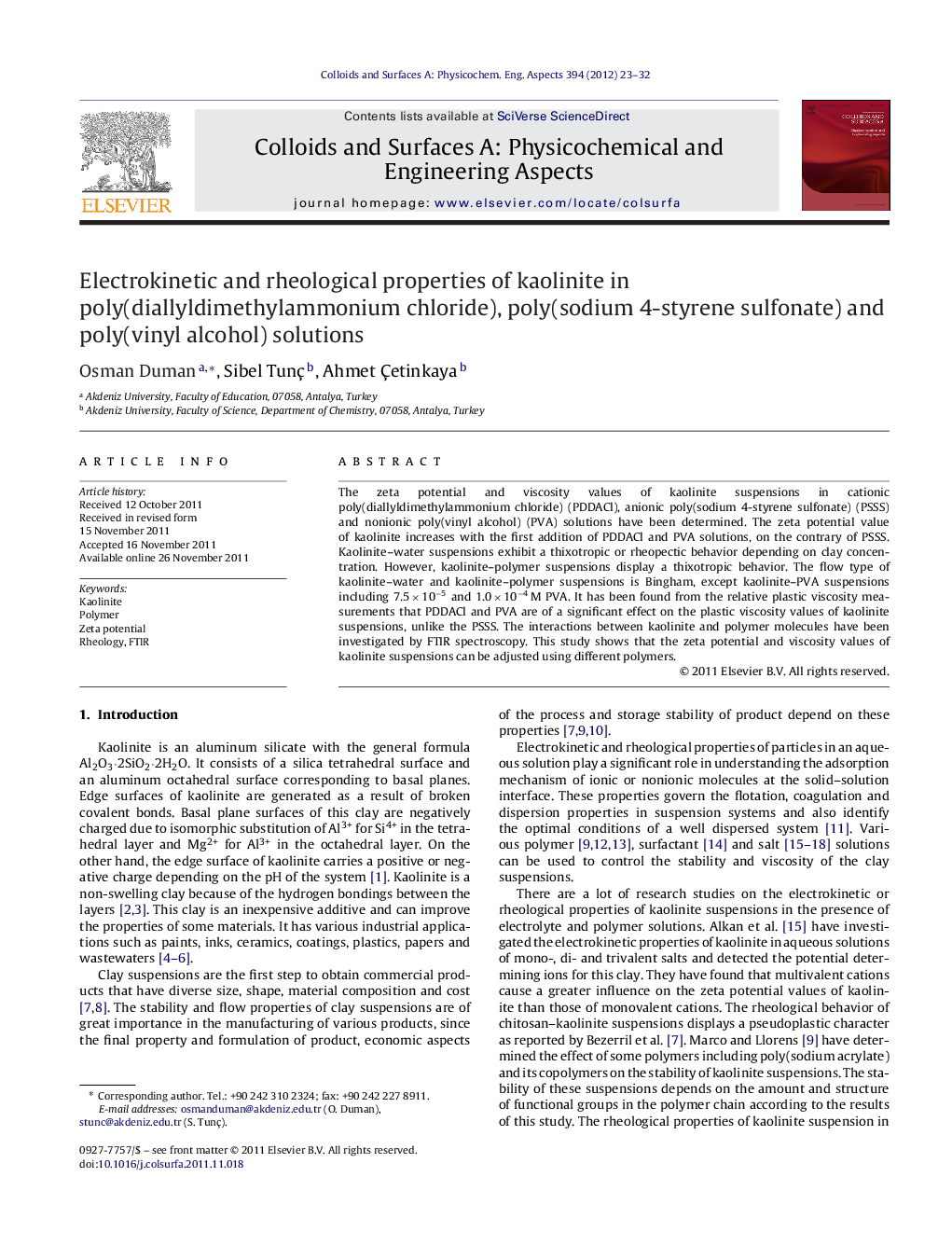| Article ID | Journal | Published Year | Pages | File Type |
|---|---|---|---|---|
| 594239 | Colloids and Surfaces A: Physicochemical and Engineering Aspects | 2012 | 10 Pages |
The zeta potential and viscosity values of kaolinite suspensions in cationic poly(diallyldimethylammonium chloride) (PDDACl), anionic poly(sodium 4-styrene sulfonate) (PSSS) and nonionic poly(vinyl alcohol) (PVA) solutions have been determined. The zeta potential value of kaolinite increases with the first addition of PDDACl and PVA solutions, on the contrary of PSSS. Kaolinite–water suspensions exhibit a thixotropic or rheopectic behavior depending on clay concentration. However, kaolinite–polymer suspensions display a thixotropic behavior. The flow type of kaolinite–water and kaolinite–polymer suspensions is Bingham, except kaolinite–PVA suspensions including 7.5 × 10−5 and 1.0 × 10−4 M PVA. It has been found from the relative plastic viscosity measurements that PDDACl and PVA are of a significant effect on the plastic viscosity values of kaolinite suspensions, unlike the PSSS. The interactions between kaolinite and polymer molecules have been investigated by FTIR spectroscopy. This study shows that the zeta potential and viscosity values of kaolinite suspensions can be adjusted using different polymers.
Graphical abstractPoly(diallyldimethylammonium chloride) (PDDACl) and poly(vinyl alcohol) (PVA) solutions on the plastic viscosity (ηpl) values of kaolinite suspension are more significant than the effect of poly(sodium 4-styrene sulfonate) (PSSS) solution.Figure optionsDownload full-size imageDownload as PowerPoint slideHighlights► Polymers may change the zeta potential and viscosity values of kaolinite suspension. ► Electrokinetic and rheological behaviors of suspensions can be adjusted by polymers. ► Kaolinite–polymer suspensions exhibit a thixotropic behavior. ► Kaolinite–water suspensions show a thixotropic behavior or rheopexic behavior. ► FTIR analyses verify the interactions between clay particles and polymer molecules.
